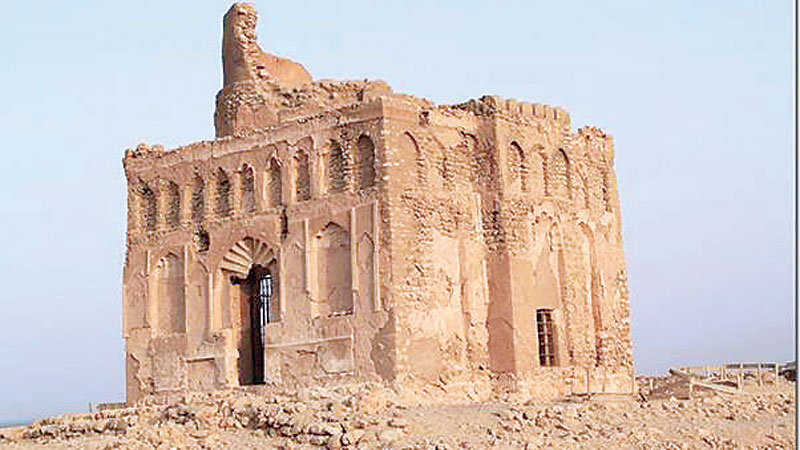

The Ministry of Heritage and Culture has announced the sympathetic restoration of the remarkable edifice overlooking the South Al Sharqiyah coastline at Qalhat. The work is expected to take 4-6 months.
Scholars are divided in respect of much of the history surrounding the last remnants of the once grand and important port of Qalhat, in the Sharqiyah Governorate. Built for Mahmud bin Ahmed al Qalhati, the founder of the Hormuz empire which flourished in the 8th-14th century, the sole structure remaining of the once grand port city is the mausoleum built by Baha al Din, for his wife Maryam, and has been called Bibi Maryam’s Mausoleum ever since. It is located on the coast, south of Muscat near the medieval city of Qalhat, which was known as the second city of the then powerful Kingdom of Hormuz, and was a strategically placed trading and security outpost
Qalhat, and the mausoleum have been chronicled even by that greatest of all travellers, Marco Polo. It has been under-stated by that great Omani explorer and traveller, Ibn Battuta as, “occupying a lofty position over the port.” He was to further describe the city as “having fine bazaars, and an exceedingly beautiful mosque (this was the mausoleum) with elaborate enamelled tilework.” For over twelve hundred years this was home to the Azidi people, who founded a sustainable port, with nearby agricultural land, suitable for dates and light grains, and it became known by global seafarers as ‘Calatu.’
The Portuguese targeted the city during the 16th Century defeating a woefully under-prepared local militia with ease and reducing the once beautiful city to rubble. The European seafarers sought to establish Catholic Christianity within their Middle East conquests, and between the two sides of the Straits of Hormuz, now Iran and Oman, saw a perfect opportunity to do so, and also to apply an iron hand to the busy trade routes of the Straits.
part of Rich Tapestry
Strangely enough, they were undone in their religious aims by the machinations of the Mandaeans, originally an Iraqi based religious sect, who were persecuted at home and fled to Iran. Even there, they were not allowed to settle, and allied themselves with the Portuguese in order to try and establish a ‘homeland.’
The Portuguese though were to be disappointed, as the Mandaeans had no intention of converting to Catholicism, and were to prove unreliable, and unhelpful in the establishment of a perpetual Mediterranean catholic dynasty in the Middle East.
After almost 100 years of conflict, in 1612, Shah Abbas of Persia, assisted by the British navy, drove the invaders out, and they never returned. It is probably a consequence of the devastation of Qalhat that have seen no meaningful attempts to resurrect the city, or revive it spiritually, even though it is such a beautiful place, with a dramatic yet natural outlook.
Ascending the track to the mausoleum today offers no indication of the panorama that unfolds before your eyes, and it requires no excessive amount of imagination to look out to sea, and imagine the craft entering, leaving and unloading in what must have been a very prominent trading centre. To sit on a rock, and look down to the coast, and further out to sea, knowing some of the history of Qalhat, makes it easy to visualise a busy port, and the trade and commerce that would have made it a haven, or a destination for travellers and traders alike.
Having visited the edifice of what is known as ‘Bebe Miriam’s Tomb’ it is easy to be disappointed that the archaeological and restorative progress of the wonderful, prominently located building had not begun earlier.
However, if for no other reason, this restoration should serve as a memorial to Maryam, the wife of Baha al Din, and to all those who perished needlessly during the Portuguese conflict 500 years ago. Their lives, and their deaths, are both part of Oman’s rich tapestry, and should not be forgotten in the journey towards the peace and prosperity of the Sultanate, but rightly cherished and remembered.
Oman Observer is now on the WhatsApp channel. Click here



